Books by Andrea Bocchetti
Journal articles by Andrea Bocchetti

"An Art for Artists": Nietzsche and the Depth of Surface, 2021
Il presente saggio si propone di evidenziare la riflessione di Nietzsche sulla relazione tra filo... more Il presente saggio si propone di evidenziare la riflessione di Nietzsche sulla relazione tra filosofia e arte. Il suo intento non è semplicemente quello di celebrare un presunto privilegio dell'arte in relazione alla verità, ma piuttosto di ricondurre la filosofia e la conoscenza alla loro velata origine creativa. A dispetto della ricerca di un al di là del velo, che renda trasparente la visione del mondo, l'arte si arresta alla profondità della superficie: la filosofia, abbandonando il pregiudizio della conoscenza, deve accogliere tutto il suo spirito su questo crinale creativo e tornare alle forme, alle increspature, mediante le quali il mondo si offre a noi. Essa deve quindi riconoscere pienamente, secondo Nietzsche, che il suo slancio non è nella direzione della verità, ma in quella della creazione. This article aims to highlight Nietzsche's reflection on the relationship between philosophy and art. Its intent is not simply to celebrate an alleged privilege of art in relation to truth, but rather to bring philosophy and knowledge back to their veiled creative origin. In spite of the search for a beyond the veil, which makes the vision of the world transparent, art stops at the depth of the surface: philosophy, abandoning the prejudice of knowledge, must welcome its whole spirit on this ridge creative and return to the forms, to the ripples, through which the world offers itself to us. Philosophy must therefore fully recognize, according to Nietzsche, that its impetus is not in the direction of truth, but in that of creation.

Enthymema XV , 2016
Goethe’s thought as a scientist and Morphology have had a pivotal influence on Nietzsche’s thinki... more Goethe’s thought as a scientist and Morphology have had a pivotal influence on Nietzsche’s thinking. Indeed they are necessary chapters to go through in order to understand how some of the key points of his thought have developed. Understanding how these factors are tangled to Nietzsche's speculation allows to rebuild the origin of suggestions from which the young Nietzsche moved from to examine the new impulses brought by biology. Moreover, it is remarkable to notice that the concept of Life as Will to Power sprout up right from these ideas. In particular, Nietzsche's Will to Power accomplished all the elements present in Goethe's considerations on living: Form, Metamorphosis, Becoming, living entity, plural-Individual.
L'influenza che il pensiero di Goethe scienziato e della morfologia hanno avuto nella formazio-ne della riflessione nietzschiana costituisce un capitolo fondamentale per ricostruire la genesi di alcuni dei suoi concetti più rilevanti. Tale influenza, infatti, permette di ricostruire le origini delle suggestioni da cui il giovane Nietzsche si è mosso, approfondite successivamente attraverso le novità apportate dalla biologia a lui contemporanea; sfruttando il terreno fertile della riflessione goethiana, essa ebbe modo di compiersi nella formulazione del concetto di vita come volontà di potenza: quest'ultimo perfeziona, trascrivendoli, tutti gli elementi della riflessione goethiana sul vivente: forma, metamorfosi, divenire, entità vivente, individuo-plurale.
Papers by Andrea Bocchetti
Traduzione italiana, nota introduttiva di Gaetano Iaia, traduzione di Andrea BocchettiTraduzione ... more Traduzione italiana, nota introduttiva di Gaetano Iaia, traduzione di Andrea BocchettiTraduzione italiana, nota introduttiva di Gaetano Iaia, traduzione di Andrea Bocchett

Aisthema: International Journal, Oct 17, 2021
Il presente saggio si propone di evidenziare la riflessione di Nietzsche sulla relazione tra filo... more Il presente saggio si propone di evidenziare la riflessione di Nietzsche sulla relazione tra filosofia e arte. Il suo intento non è semplicemente quello di celebrare un presunto privilegio dell'arte in relazione alla verità, ma piuttosto di ricondurre la filosofia e la conoscenza alla loro velata origine creativa. A dispetto della ricerca di un al di là del velo, che renda trasparente la visione del mondo, l'arte si arresta alla profondità della superficie: la filosofia, abbandonando il pregiudizio della conoscenza, deve accogliere tutto il suo spirito su questo crinale creativo e tornare alle forme, alle increspature, mediante le quali il mondo si offre a noi. Essa deve quindi riconoscere pienamente, secondo Nietzsche, che il suo slancio non è nella direzione della verità, ma in quella della creazione. This article aims to highlight Nietzsche's reflection on the relationship between philosophy and art. Its intent is not simply to celebrate an alleged privilege of art in relation to truth, but rather to bring philosophy and knowledge back to their veiled creative origin. In spite of the search for a beyond the veil, which makes the vision of the world transparent, art stops at the depth of the surface: philosophy, abandoning the prejudice of knowledge, must welcome its whole spirit on this ridge creative and return to the forms, to the ripples, through which the world offers itself to us. Philosophy must therefore fully recognize, according to Nietzsche, that its impetus is not in the direction of truth, but in that of creation.
Les Etudes philosophiques, 2018
Aisthema: International Journal, 2016
Prima traduzione in lingua italiana di M. Henry, Art et Phénoménologie de la Vie, Entretien avec ... more Prima traduzione in lingua italiana di M. Henry, Art et Phénoménologie de la Vie, Entretien avec M. Huhl et J.-M. Brohm, pubblicata originariamente in Prétentaine, n.6, Esthétiques, 1996, 27-43 e ora in Phénoménologie de la Vie - Tome III. De l'art et du politique, Presses Universitaires de France, Paris 2004, 283-308. Nota introduttiva di Gaetano Iaia Traduzione dal francese di Andrea Bocchetti

L’influenza che il pensiero di Goethe scienziato e della morfologia hanno avuto nella formazione ... more L’influenza che il pensiero di Goethe scienziato e della morfologia hanno avuto nella formazione della riflessione nietzschiana costituisce un capitolo fondamentale per ricostruire la genesi di alcuni dei suoi concetti piu rilevanti. Tale influenza, infatti, permette di ricostruire le origini delle suggestioni da cui il giovane Nietzsche si e mosso, approfondite successivamente attraverso le novita apportate dalla biologia a lui contemporanea; sfruttando il terreno fertile della riflessione goethiana, essa ebbe modo di compiersi nella formulazione del concetto di vita come volonta di potenza: quest’ultimo perfeziona, trascrivendoli, tutti gli elementi della riflessione goethiana sul vivente: forma, metamorfosi, divenire, entita vivente, individuo-plurale. Goethe’s thought as a scientist and Morphology have had a pivotal influence on Nietzsche’s thinking. Indeed they are necessary chapters to go through in order to understand how some of the key points of his thought have developed....
Aisthema: International Journal, 2016
Prima traduzione in lingua italiana di M. Henry, Art et Phenomenologie de la Vie , Entretien avec... more Prima traduzione in lingua italiana di M. Henry, Art et Phenomenologie de la Vie , Entretien avec M. Huhl et J.-M. Brohm , pubblicata originariamente in Pretentaine , n.6, Esthetiques , 1996, 27-43 e ora in Phenomenologie de la Vie - Tome III. De l'art et du politique , Presses Universitaires de France, Paris 2004, 283-308. Nota introduttiva di Gaetano Iaia, traduzione dal francese di Andrea Bocchetti.

Cette these a comme objectif de repenser le rapport entre Descartes et Nietzsche a travers une co... more Cette these a comme objectif de repenser le rapport entre Descartes et Nietzsche a travers une continuite qui se construit sur le fil conducteur thematique du statut cartesien de l’ego. L’interpretation heideggerienne du lien entre Descartes et Nietzsche est pour cette raison fondamentale : en effet, en relevant a l’interieur ce rapport les signes du deploiement d’un Meme qui a marque l’epoque de la metaphysique de la subjectivite, Heidegger definit un espace fondamental commun entre les deux philosophes. Cet espace, qui se developpe a partir de l’emergence de l’ego, semble cependant deborder les limites constitutives de la metaphysique, lorsque Nietzsche retrouve dans le commencement cartesien une ouverture de l’ego au sein du vivant interprete comme volonte de puissance. Sa demarche, loin de seulement le neantiser, vise a tra-duire l’ego dans une dimension morphologique : l’ego serait donc l’effet d’une organisation d’une agregation de forces, qui prennent forme par le biais d’un ...
Http Www Theses Fr, Oct 3, 2012
Les Études philosophiques

The comparison of the methodological problems of Llull and Descartes is justified by their shared... more The comparison of the methodological problems of Llull and Descartes is justified by their shared demand for a unification of the epistemological perspective of the sciences, which they sought by reducing the sciences to methodological dispersion, a heritage of the logical and metaphysical structure of aristotelianism and scholastic thought. Both philosophers pose the question, in fact, of how to implement a unique method in order to reunite all the sciences with respect to their determination and resolution. The lullian Ars Generalis sought to erect a supreme Science above the particular sciences; but, in doing so, Llull conceived of a combinatory system, which intended to propose, after a definition of the elements concerning the problematics he posed, a resolving mechanism based on the multiple possibilities of arranging their components. The characteristics which have aided the diffusion and success of lullism after his death and during the Renaissance, and into the XVII century, drew the interest of those who were engaged with the debates concerning a new science and new method. It goes without saying that lullism cannot be transposed tout-court. In fact, the motivations and the results of his work were not, in the end, considered by modern thought to be able to fulfil the tasks of a truly methodological and scientific revolution. Descartes, in particular, considered Llull a witness to an artificial and ineffective sophistic, which was based on a merely positional principle of argumentative connection. However, it was precisely with respect to this principle that Descartes glimpsed a new rhetorical version of the art of logic. In fact, in his Discours de la méthode, Descartes, after having reaffirmed his analytical procedure, showed how the latter is characterized by a widening path, in which the simple setting of elements is ineffective in realizing a structure of knowledges indefinitely expandable. Furthermore, Descartes criticized such a system, which seemed to be articulated as a mere formalism, susceptible to vacuity and vagueness, as well as to an abstraction that would corrupt any possible extension of a single problem to its reference in reality. Fernand Brunner, in describing the continuity between the aims of Descartes and Leibniz, which tried to construct a new logical and mathematic formal system, clarifies this point (Brunner, 92): [Leibniz] songeait aussi bien à Descartes, qui recommandait de soutenir l'effort de l'entendement par des représentations sensibles, et qui affirmait fortement l'unité de la science». All'arte di Lullo «s'oppose l'effort de Descartes tendant à secouer les chaines de la forme et à ranimer l'attention de la pensée. Leibniz de même, énumérant les auteurs qui ont cherché à donner des démonstrations de leurs pensées, cite Lulle et déclare que son art serait sans doute une belle chose, si ses termes fondamentaux n'étaient pas vagues et s'ils ne servaient pas seulement à parler et point du tout à découvrir la vérité. In a well-known passage, taken from the Discours de la méthode, second part, Descartes indeed affirms (Descartes 1637 [2011], 42):
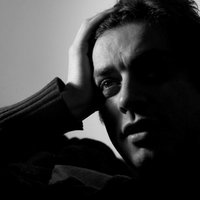



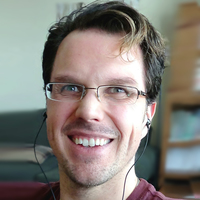



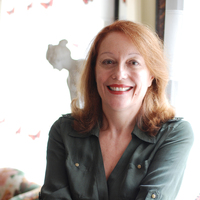
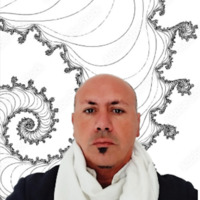
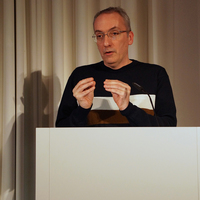
Uploads
Books by Andrea Bocchetti
Journal articles by Andrea Bocchetti
L'influenza che il pensiero di Goethe scienziato e della morfologia hanno avuto nella formazio-ne della riflessione nietzschiana costituisce un capitolo fondamentale per ricostruire la genesi di alcuni dei suoi concetti più rilevanti. Tale influenza, infatti, permette di ricostruire le origini delle suggestioni da cui il giovane Nietzsche si è mosso, approfondite successivamente attraverso le novità apportate dalla biologia a lui contemporanea; sfruttando il terreno fertile della riflessione goethiana, essa ebbe modo di compiersi nella formulazione del concetto di vita come volontà di potenza: quest'ultimo perfeziona, trascrivendoli, tutti gli elementi della riflessione goethiana sul vivente: forma, metamorfosi, divenire, entità vivente, individuo-plurale.
Papers by Andrea Bocchetti
L'influenza che il pensiero di Goethe scienziato e della morfologia hanno avuto nella formazio-ne della riflessione nietzschiana costituisce un capitolo fondamentale per ricostruire la genesi di alcuni dei suoi concetti più rilevanti. Tale influenza, infatti, permette di ricostruire le origini delle suggestioni da cui il giovane Nietzsche si è mosso, approfondite successivamente attraverso le novità apportate dalla biologia a lui contemporanea; sfruttando il terreno fertile della riflessione goethiana, essa ebbe modo di compiersi nella formulazione del concetto di vita come volontà di potenza: quest'ultimo perfeziona, trascrivendoli, tutti gli elementi della riflessione goethiana sul vivente: forma, metamorfosi, divenire, entità vivente, individuo-plurale.